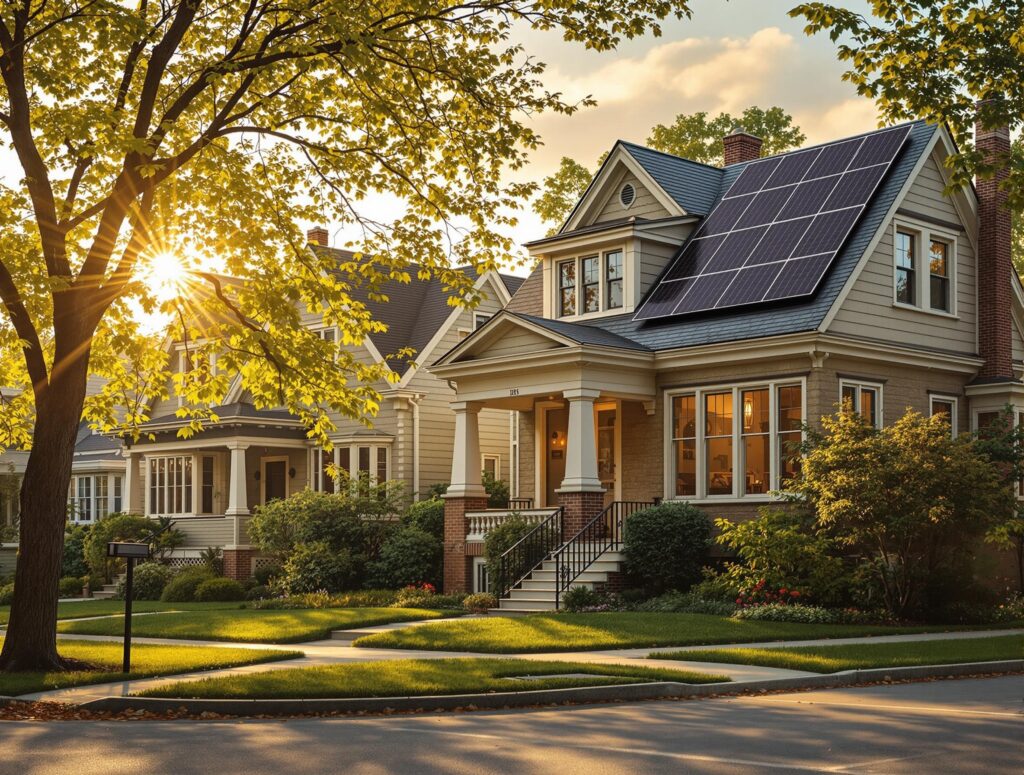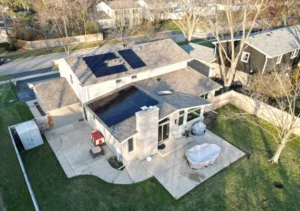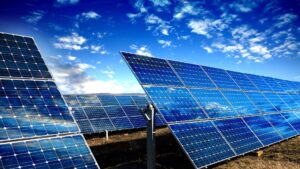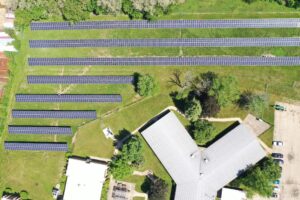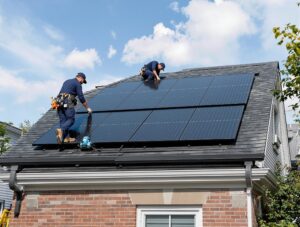Your Solar Estimate Isn’t the Real Price. It’s the Starting Point.
Let’s talk about the moment of truth. The moment you open a proposal and see the total cost for a solar energy system.
It’s a real number. It’s a significant investment, and seeing it in black and white can make you take a sharp, involuntary breath. For a second, that number might feel like an obstacle. A finish line.
But I’m here to tell you it’s not.
That number on your solar estimate isn’t the price you pay. It’s the starting block.
Treating that initial figure as your final cost is like looking at the sticker price of a new car and completely ignoring the trade-in value, the manufacturer rebates, and the dealer incentives. You’re only seeing one part of a much bigger, much better financial equation.
That number isn’t an invoice. It’s the “before” picture. It’s the starting point on a journey to a much, much smaller number—the one you’ll actually pay.
So, let’s get to the good part. Let’s talk about the “after.”
Meet the Illinois “Triple Stack”: Your Secret Financial Engine
So, how do we get from that big starting number to the one that matters?
The path to that “after” picture has a name, and it’s something every Illinois homeowner needs to understand: The Triple Stack.
This is the part that most people miss. They hear about a federal credit here, a state program there, and it all feels like a confusing jumble of government paperwork. It’s not.
Think of it as a single, powerful financial engine with three distinct layers working in perfect harmony. It’s not a collection of coupons; it’s a unified strategy. When you see how they stack together, the entire financial picture of going solar changes.
This isn’t a loophole or a temporary sale. This is the established, official system for going solar in Illinois. And it’s made up of three powerful layers:
- A federal tax credit.
- A state-level production payment.
- A local utility rebate.
Let’s look at each layer, one by one.
Layer 1: The 30% Federal Tax Credit (Your Foundation)
Let’s start with the bedrock. This is the big one, the national headliner you’ve likely heard about, and it’s called the Residential Clean Energy Credit.
But here’s the part people often get wrong—and it’s a distinction that puts thousands of dollars back in your pocket. A tax credit is not a tax deduction. It’s infinitely better.
A deduction just lowers the amount of your income that gets taxed. A credit, on the other hand, is a direct, dollar-for-dollar reduction of the actual tax bill you send to the IRS.
Think of it as a golden coupon you hand directly to Uncle Sam.
So, if your total system cost on that initial solar estimate is $40,000, you are entitled to a $12,000 reduction in what you owe in federal taxes. It’s that simple. If you owe $15,000 in taxes, you now only owe $3,000.
This isn’t a maybe. It’s not a rebate check you wait for in the mail. It’s a direct financial claim you are entitled to make.
This 30% forms the solid, concrete foundation of your solar investment. But it’s only the first floor. Now, let’s build the part of the house that makes going solar in Illinois unlike anywhere else.*
Layer 2: The Illinois Shines SREC Program (Your Revenue Stream)
Okay, deep breath. The next layer has a technical, government-y name: The Illinois Shines Adjustable Block Program.
Forget the name. Here’s what you actually need to know:
Your solar panels produce two distinct things. The first is obvious: electricity that powers your lights, your fridge, and your life, dramatically lowering your monthly utility bill.
But they also produce a second, invisible product: a Solar Renewable Energy Certificate (SREC). For every 1,000 kilowatt-hours of clean power your system generates, you create one SREC. Think of it as a birth certificate for clean energy, proof that you put a specific amount of renewable power onto the grid.
And here’s the magic: Illinois needs your clean energy.
Our state has a legal mandate to get to 100% clean energy. To meet that goal, utility companies are required to buy these certificates from homeowners like you.
But here’s the part that changes everything. This isn’t some volatile market where you have to hope for a good price. The best part of the Illinois program is that you get paid for 15 years’ worth of these certificates upfront.
Let me say that again. A check is cut directly to you, typically within the first year of operation. This single payment often covers another 30-40% of your total system cost.
This is the most misunderstood and powerful part of the Triple Stack. It’s not a rebate. It’s not a credit. It’s revenue. Your system isn’t just an appliance that saves you money; it’s now an asset that generates a significant, immediate income.
We’ve laid the 30% federal foundation. We’ve just added a 30%+ revenue engine on top.
Now for the cherry on top.
Layer 3: The Utility Smart Inverter Rebate (Your Bonus Check)
Let’s grab the cherry for the top of our financial sundae.
This last layer is the simplest of them all, but it’s the perfect example of how deeply Illinois is committed to solar. The major Illinois utilities—ComEd and Ameren—will literally pay you to install modern equipment.
When you go solar, your system includes a device called an inverter. It’s the brain of the operation. Today’s inverters are “smart,” meaning they can communicate with the grid to help create a more stable, resilient energy network for everyone.
Because the utilities want this modern technology on their grid, they offer a direct, one-time rebate for installing a smart inverter.
For most homeowners, this means a straightforward $500 check sent directly to you.
No complex forms. No waiting for tax season. It’s a simple, direct payment. A bonus. A thank-you note from the utility, with a check inside.
It’s not the biggest piece of the puzzle, but it proves a critical point: in Illinois, every single part of the solar journey is designed to put money back in your pocket.
And when you stack all three layers together… well, that’s when the magic really happens.
Putting It All Together: Why a Solar Calculator Can’t Show You This Math
Let’s pause for a second and look at what we’ve built.
- We started with a 30% reduction from the federal government.
- We layered on another 30-40% in upfront revenue from the Illinois Shines program.
- We topped it off with a bonus check from the utility.
Let’s be conservative. Add the 30% federal credit and a 30%+ SREC payment together. That’s 60%+ of your system cost covered right there, before you even factor in the utility rebate or the decades of energy savings.
More than half. Gone.
Now, ask yourself: have you ever plugged your information into one of those free online “solar calculators”? Did it show you a number that slashed your cost by more than half?
Of course not. And here’s why:
Those calculators are built for a national audience. They are fundamentally incapable of understanding the unique, powerful, and layered math of the Illinois Triple Stack.
They see the 30% federal credit because everyone gets that. But they have no idea how to account for the Illinois Shines program—the part where you get paid upfront for 15 years of SRECs. That’s a specific, state-level program that changes the entire game, and a generic calculator’s programming completely ignores it.
Using a national solar calculator for an Illinois home is like trying to find your way around Chicago using a map of Los Angeles. It’s the wrong tool, showing you the wrong information, and leading you to the wrong conclusion.
It can only show you the sticker price. It can’t show you the Illinois price.
And that’s the gap. It’s the gap between a generic, automated number and a real, handcrafted financial plan.
How a Great Solar Company Turns Incentives into a Rock-Solid Solar Estimate
That gap—the one between an online calculator’s generic estimate and your actual number—is where our team comes in.
You talk to a human. A human who lives and breathes Illinois solar.
This is what we do at Windfree. We don’t plug your address into a generic calculator and spit out a PDF. We start with a conversation.
We build your financial picture piece by piece, layer by layer, just like we did here.
- We’ll look at your actual energy usage to see what your system needs to produce.
- We’ll analyze your roof to design the most efficient layout.
- Then, and only then, we will manually calculate your specific Triple Stack. We will show you the exact, personalized math that takes you from that initial system cost to the real, final number you’ll actually pay.
The proposal you get from us isn’t just a quote. It’s your financial roadmap. It shows the “before” and the “after,” and it details every single step of the journey between the two.
There’s no mystery. No confusing jargon. Just big-picture thinking made ridiculously simple.
If you’re ready to see the real number—the Illinois number—let’s have a 15-minute chat. We’ll build your personal Triple Stack together. You’ll finally have the clarity you’ve been looking for.
Let’s get started.
Your Estimate Isn’t a Price Tag. It’s a Plan.
An estimate from a calculator is a number. An estimate from Windfree is a strategy.
It’s the difference between looking at a price and seeing a path forward.
The form on our contact page is the starting line for that path. It’s where all these layers we’ve discussed—the federal credit, the SREC revenue, the utility rebate—finally come together on a single page, tailored specifically for your home, your energy use, and your goals.
When you fill it out, you aren’t just requesting a quote. You’re starting a conversation. You’re raising your hand and saying, “Show me my plan.”
We’ll take that information, do the real math (the Illinois math), and build the financial roadmap we’ve been talking about. No obligation. No hard sell. Just clarity.
You’ll see the system cost, the full Triple Stack incentives applied, and the final number that makes sense for you. You’ll see your path to owning your power, laid out in plain English.
It all starts here. Click the link below, fill out the short form, and let’s turn these big ideas into your rock-solid plan.

